Growing lilies
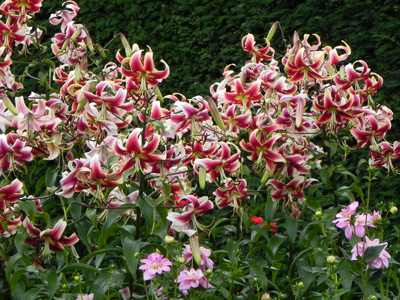
Lilies are often recognised as the Nation’s favourite flowers, even more popular than roses! These glorious plants are easy to grow and so rewarding for relatively little effort from the gardener. They fit into the smallest gardens, either in the open ground or in pots. They mix well with roses, shrubs and perennials, adding summer colour and often fabulous fragrance. Their elegant waxy blooms are long lasting both in the garden and as cut flowers. So what are the secrets of success?
Buy early and plant immediately
Buy lilies in late winter and early spring and plant them as soon as possible. Contrary to popular belief they are quite hardy and do not like to be out of the ground for too long. If you cannot plant immediately keep them somewhere cool, ideally covered with compost, composted bark or even slightly damp newspaper. As lily bulbs consist of a cluster of delicate waxy scales they are delicate so handle carefully.
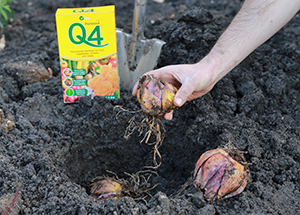 Planting lilies
Planting lilies
When they are out of the ground lily bulbs tend to lose water, causing the waxy scales to shrink and open up. This can allow soil water to settle amongst the scales at the bottom of the bulb causing rotting. Therefore it is a good idea to plant the bulbs on their sides; this helps to keep soil water away from the growing point at the base of the bulb.
As with other bulbs, plant them with three times the depth of the bulb of soil or compost over them. This applies whether you are planting in the open ground or in pots. Distance between the bulbs depends on the lily. Large flowered tall lilies should be planted 20-30cm apart (8-12”) in the open ground, closer in pots. Smaller lilies can be planted even closer. You do not need to plant in large groups; many varieties look just as good when planted individually, especially in beds and borders.
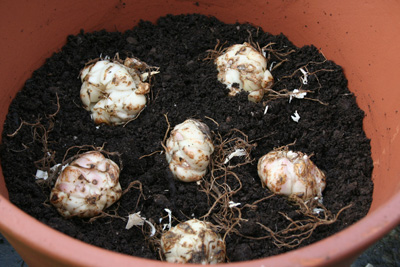
When planting in pots, or in groups in the border position the bulbs nose to tail. This helps the shoots to grow in an orderly fashion and gives maximum space for roots to grow.
Growing conditions
Lilies dislike poorly drained soils. If in doubt add some coarse grit under the bulbs when planting and improve the soil with grit and compost. Lilies are greedy feeders. For best results mix a couple of generous handfuls of Vitax Q4 into the soil when planting. When planting in pots use Multi-purpose compost with added John Innes. When the shoots are around 10cm high sprinkle a little Vitax Q4 onto the compost surface and top up with a little extra compost. This will supply all the nutrients the bulbs need for the flowering season.
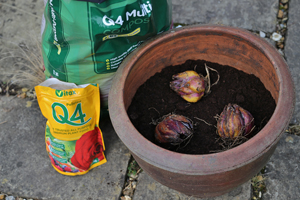
You can remove the flowerheads when the petals fall but be sure to leave the stems and leaves to die down naturally. These are building the bulbs for the following growing season.
Remember to feed annually with Vitax Q4 in early spring before bulbs emerge and again after the flowers have faded. This will keep the bulbs in peak condition and they should perform in your garden for several years.
Look out for ..
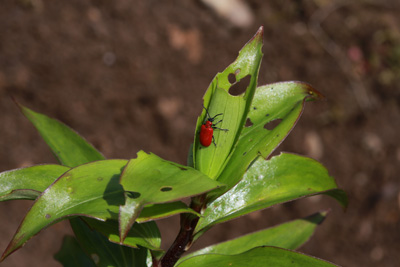
Keep a look out for lily beetle. This destructive little pest lays its eggs on lily leaves and stems and the voracious larvae that emerge feed on them causing devastating damage. The beetle are bright orange-red and are easy to spot. They are often found in pairs. Pick them off and squash them as soon as you spot them: this is perhaps the most effective means of control.
Andy McIndoe for Vitax
Your login details have been used by another user or machine. Login details can only be used once at any one time so you have therefore automatically been logged out. Please contact your sites administrator if you believe this other user or machine has unauthorised access.












